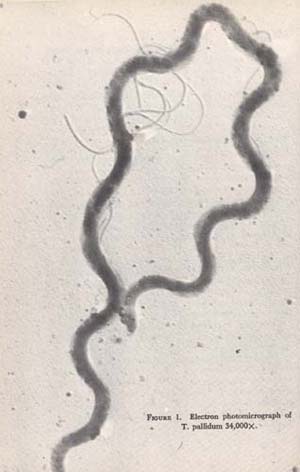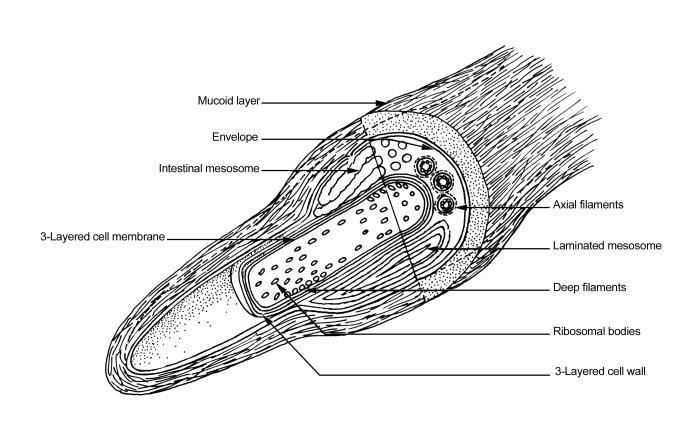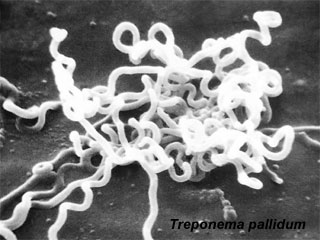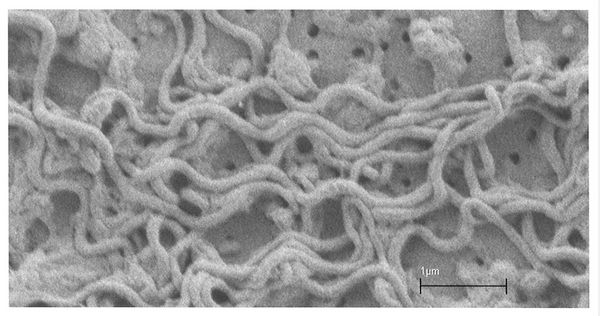Epidemiology
Syphilis is caused by a spirochete organism, Treponema Pallidum, which has a thin, slow-moving, corkscrew-like body. Other variants of this family of Treponematoses include Treponema pertenue (yaws), Treponema endemicum (bejel), and Treponema carateum (pinta). Venereal syphilis is thought to have mutated from yaws by many supporters of the "Post-Columbian" origin theory. Syphilis is a very frail organism that cannot thrive outside the body and is crippled by simple physical and chemical elements such as heat, soap, and water. Because of these characteristics, its primary method of transmission is through direct contact of vulnerable mucous membranes during sex. Venereal syphilis presents itself in four (although most only refer to three) distinct stages:
- Primary Syphilis: the infection is usually seen as individual sores in adults around the genitals.
- Secondary Syphilis: the infection presents itself as a general rash all over the body (mostly on the hands and feet).
- Latent Syphilis: 'hidden syphilis'; the disease shows no symptoms but the organism continues to reproduce.
- Tertiary Syphilis: the disease causes major destruction to the skeletal system, circulatory system, and nervous system (along with other vital organs); eventually results in death.
Pictures
(Click photos to enlarge): Source / Source / Source






